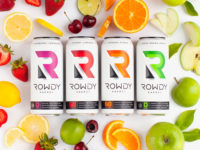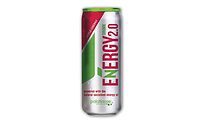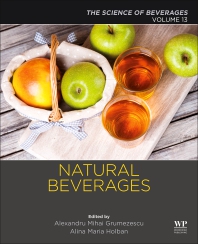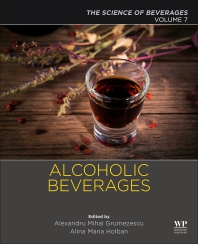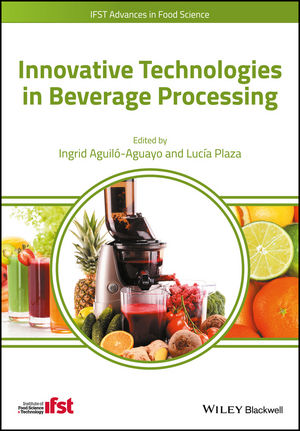A natural alternative for energy
Energy ingredients found in nature gain traction

The Hain Celestial Group’s Celestial Seasonings Enerji Green Tea Energy Shots contain all-natural ingredients, which is a growing trend in the energy drink and shot segment, experts note. (Image courtesy of The Hain Celestial Group)

Drink mixes like Vitamin Squeeze Powder Water Enhancers have emerged as a new delivery system for energy-boosting ingredients. (Image courtesy of Ecosentials LLC)

Enhanced waters like VBlast’s Gator Pit Energy Formula are a popular product category for energy ingredients. (Image courtesy of New York Spring Water Inc.)



There is no shortage of new product launches within the energy drink and shot sector. According to the Netherlands-based Innova Market Insights’ database, 124 energy drink and shot products launched in the United States in 2012. Of those product launches, energy/alertness was the top health positioning.
And when it comes to finding sources for energy-inducing products, beverage-makers have their fair share of options. According to Innova, vitamin B12 was the most used ingredient, appearing in 43.3 percent of energy product launches in the United States in 2012. And many other ingredients also are associated with energy-boosting qualities. Of the U.S. energy drink and shot launches in 2012, vitamin B6, caffeine, vitamin B3 and taurine were in 40.6, 31.5, 26 and 21.2 percent of products, respectively, based on Innova data. Vitamin B2, guarana, green tea catechins and yerba mate also were popular ingredients.
Going natural
Although energy/alertness was the top health positioning for U.S. energy drink and shot launches in 2012, the No. 3 positioning was natural, which was associated with 25 percent of launches, according to Innova data.
Tangentially, ingredient suppliers have noted that more beverage manufacturers are requesting ingredients that offer a natural form of energy.
“Caffeine labeling concerns have led to an increase in the use of natural caffeine-containing ingredients like coffee, tea, green coffee extract, yerba mate and guarana,” says Russ Hazen, raw materials and innovation specialist for Fortitech Inc., Schenectady, N.Y. “Energy drinks are becoming more ‘natural’ and utilizing sugars and carbohydrates from less processed sources like fruit juices.”
Jeremy Bartos, senior innovation scientist with Glanbia Nutritionals, Carlsbad, Calif., says consumers are starting to look more often for natural sources of ingredients and cleaner labels, which is influencing the energy drink and shot market.
“Natural sources of caffeine such as green or black tea, green coffee bean, guarana, yerba mate and other botanicals are being used in place of synthetic caffeine in energy drinks,” he says.
Bartos notes that as consumers trend toward these more “natural” energy alternatives, inclusion of tea extracts, botanicals and other natural caffeine sources are becoming the norm.
Within the energy drink sector, products formulated with natural caffeine alternatives as well as sustained energy benefits are emerging, Bartos explains.
“Ingredients such as green coffee bean and green tea extracts provide natural sources of caffeine, increasing energy alertness,” he says. “For sustained energy, l-carnitine l-tartrate, choline and isomaltulose promote a more balanced and longer-lasting energy source during exercise.”
When it comes to consumer trends, Crowley, La.-based The Wright Group Chief Executive Officer Sam Wright IV also says numerous demographics are looking for sustained energy. “The main thing here is a noticeable trend toward gentle, sustained energy over time, driven in large part by women and older consumers who do not enjoy the ‘rush’ of products geared more toward younger people and athletes,” he says. “The Wright Group is able to offer various formulations of timed-release caffeine, which are useful in such products.”
Understanding the demand for natural energy alternatives, ingredient suppliers continue to develop products to meet these trends.
“We produce several ingredients that are ideal for energy drinks, such as natural caffeine — very important for those labels that claim 100 percent natural,” says Cecilia McCollum, executive vice president of Blue California, Rancho Santa Margarita, Calif. “We produce true guarana extracts with natural caffeine content derived from the guarana seeds, and our trademarked Vitapanax, a purified ginseng extract guaranteed to be free of pesticides and other contaminants.”
Another natural caffeine ingredient of Blue California is its L-TeaActive Natural l-theanine. L-theanine has been proven to ameliorate the negative side effects of caffeine, such as nervousness, anxiety and lack of sleep, McCollum explains.
“L-TeaActive reduces stress and anxiety without drowsiness, so it is a perfect complement to energy formulations,” she adds.
The increased usage of natural energy alternatives also has provided opportunities for energy drink products to carry additional claims.
“Artificially flavored beverages are also decreasing, making room for energy drinks flavored with tea extracts — which also have natural caffeine and polyphenol content — stevia, coconut water, agave nectar and juices,” Glanbia’s Bartos says. “The switch toward natural colors that are also biologically functional, such as the anthocyanins and other flavonoids, is another impact we’re seeing in the market.”
Bartos also notes that the use of ingredients that contain antioxidants is becoming popular in energy drinks. “The purpose of antioxidants is to protect the cells in the body from damage caused by oxidative stress, namely free radicals,” he says. “Many polyphenols also act as vasodilators, which increases blood flow throughout the body and allows for quicker transport of oxygen, glucose and other materials required for cellular energy production. Polyphenols are well known for their antioxidant and vasodilatory potential. One such example is pterostilbene, an ingredient closely related to but more bioavailable than resveratrol.”
According to Innova data, 16.9 percent of U.S. energy drink and shot launches for 2012 contained an antioxidant positioning.
From A to Z
Whether they use botanicals, vitamins or carbohydrates to provide natural energy, beverage manufacturers have a vast number of options from which to choose, experts note.
“In addition to general energy-providing macronutrients like carbohydrates and proteins, there are a number of micronutrients that are known to contribute energy,” Fortitech’s Hazen says.
The B complex vitamins can play a variety of roles at increasing energy levels, he adds. For example, vitamin B6 can facilitate the conversion of glycogen to glucose for energy production; vitamin B5 can enhance the release of energy from carbohydrates in the Krebs cycle; vitamin B3 can create oxidation-reduction reactions in the Krebs cycle involving the production of energy from carbohydrates; vitamin B2 can assist in the conversion of carbohydrates to adenosine triphosphate (ATP), a high-energy fuel for living cells, in the production of energy; and vitamin B1 can assist in the conversion of blood sugar to energy in the Krebs cycle, Hazen explains.
Additional ingredients that can offer an energy-boosting component include magnesium, l-carnitine, quercetin, coenzyme Q10, and branched-chain amino acids such as leucine, isoleucine and valine, Hazen says.
D-ribose, a type of sugar produced in the body, also can help replenish ATP and assist in boosting muscle energy, which can improve performance and exercise duration, he adds.
Bioenergy Life Science Inc., Ham Lake, Minn., markets its Bioenergy Ribose as a standalone product or as an addition to functional foods and beverages. On its website, the company offers a sampling of clinical studies supporting the supplementation of Bioenergy Ribose to improve endurance, shorten recovery time, reduce cramping and soreness, and reduce fatigue.
Formatting for the space
Beverage formats can be an ideal vehicle to deliver energy- and performance-focused nutrients, Fortitech’s Hazen says.
Although consumers have a number of traditional-format energy drinks from which to choose, beverage-makers are developing different delivery systems to meet their needs.
“The energy category keeps getting redefined every time somebody finds a new ingredient or a new application or even a new delivery system for energy,” says Kate Ratliff, technical director for Flavorman, Louisville, Ky.
Ratliff notes that energy formats have evolved from the standard can to more concentrated formats such as energy shots in 2-ounce bottles or liquid concentrates.
“I think there’s going to be the new formats of energy,” she says. “I don’t think that we’ve seen the end of the super-concentrated energy, and I do think that there’s going to be some different delivery mechanisms coming out in the near future. Seeing how the industry itself has gone from canned to bigger can to biggest can to shooter to stick pack to super concentrate to effervescent tablets, I think that the energy ingredient beverage space is one that is always redefining itself through a delivery mechanism, so I would think that we’re probably going to stay in that small space for a bit.”
Fortitech’s Hazen notes that shots and enhanced waters have dominated the category, but adds that convenient formats could be in store for the future. “Powdered drink mixes are another area that is gaining in popularity due to the convenience of use for this type of product,” he says.
Effervescent tablets also could be a category to deliver energy functions in the beverage arena, he adds. “Ease of use and portability make this application ideal for today’s on-the-go consumer,” he says.
Ingredient suppliers also suggest that energy supplementation could be used in dairy beverages.
“We like to think that dairy and shakes could also become a vehicle for energy claims, but top of mind awareness here is mostly focused on digestive health and calcium delivery rather than energy,” The Wright Group’s Wright says. “You have to be wise in picking your spots.”
Glanbia’s Bartos notes that beverage manufacturers can capitalize on natural trends by utilizing natural energy ingredients in formats that consumers perceive as more natural, such as teas, juices and waters.
Although new delivery methods can offer consumers more options to obtain energy-boosting capabilities, product development procedures must still ensure that the product will maintain its efficacious levels as well as provide a product that appeals to consumer tastes, experts note.
“There tends to be a large number of ingredients in many energy drinks, including several with bitter or other unpleasant flavor notes,” The Wright Group’s Wright says. “Also, some ingredients do not play well with other ingredients.”
Wright suggests using microencapsulated ingredients to overcome this challenge. The Wright Group offers its SuperCoat line of value-added ingredients to improve taste as well as enhance stability, he adds.
Fortitech’s Hazen also suggests utilizing flavor houses for blocking and masking off-flavors. “Through careful selection of finished product flavor profiles and appropriate masking flavors, a vast array of less-desirable flavors can be overcome,” he says.
Looking for a reprint of this article?
From high-res PDFs to custom plaques, order your copy today!




